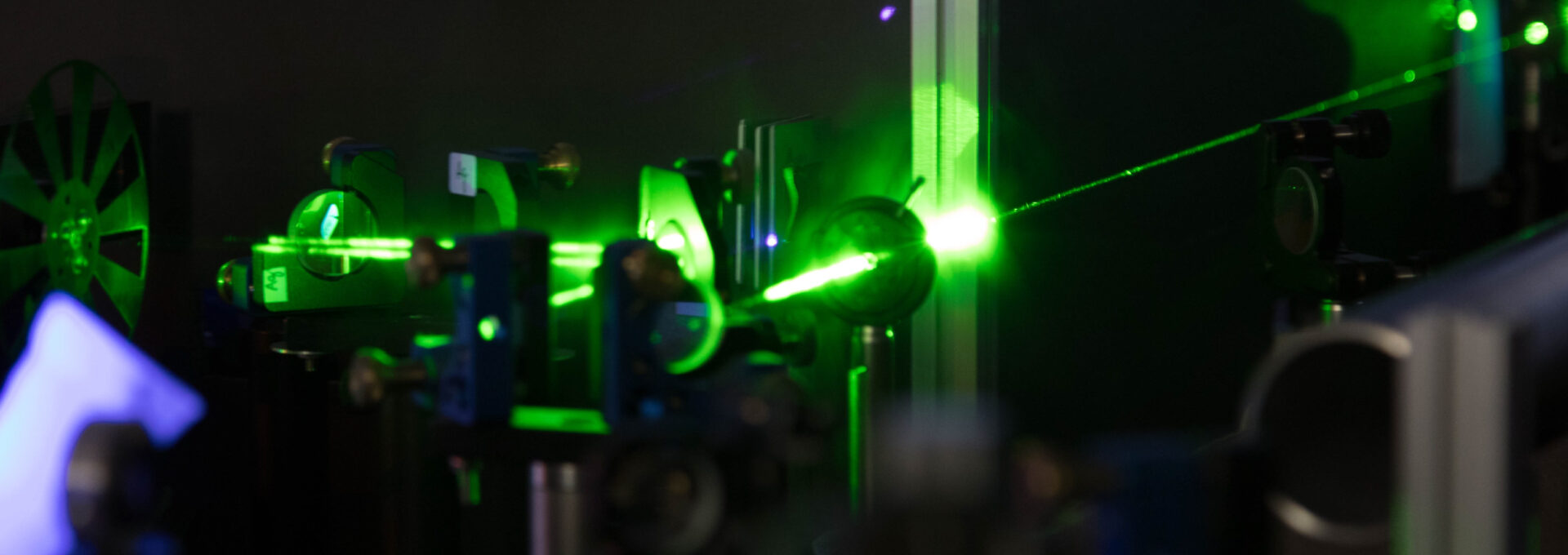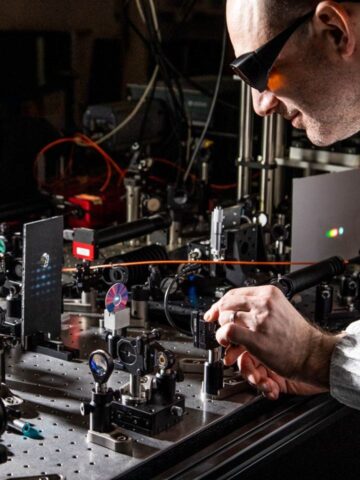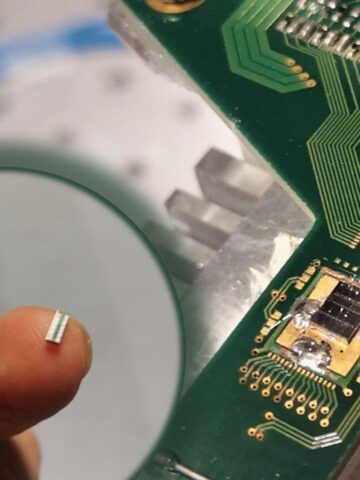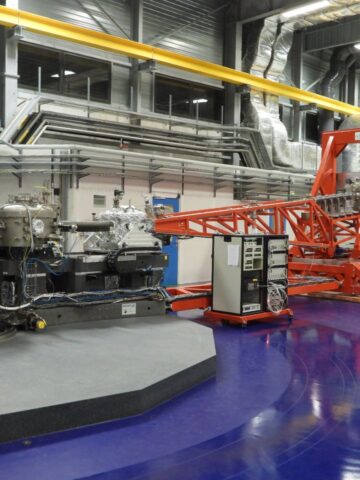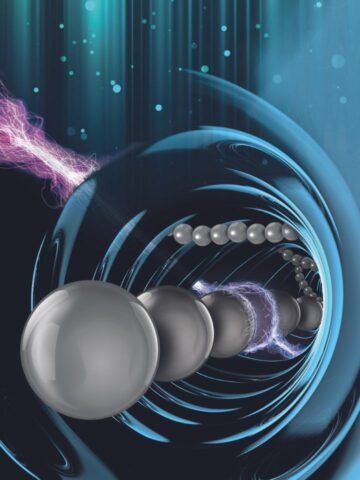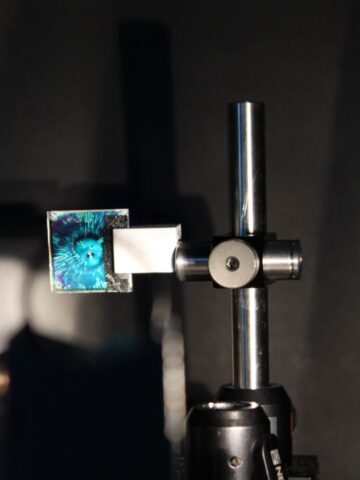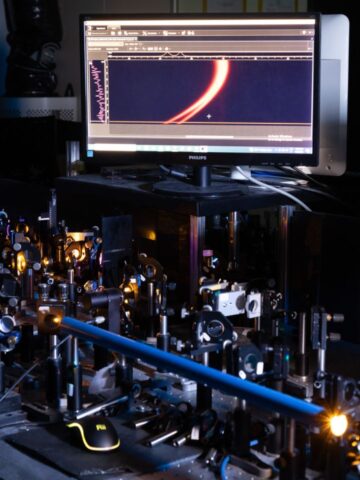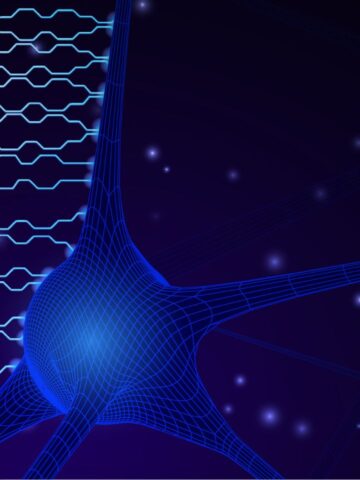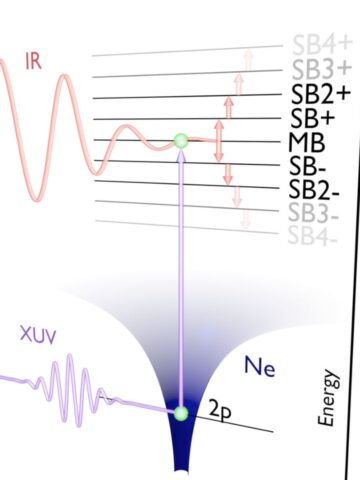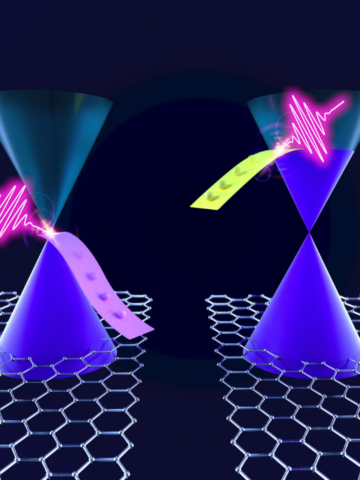Graphene Flagship project researchers have demonstrated a revolutionary property of two-dimensional materials: the ability to make ultra-fast optical switches that can turn light beams on and off at previously unimaginable speeds.
The study was published in the journal Nature Photonics.
Graphene is the thinnest existing material because it has the thickness of a single layer of atoms. Since its discovery, several atomic-thick two-dimensional materials have been introduced which display extraordinary physical properties and enable new technologies to be developed. Researchers at Friedrich Schiller University Jena, in partnership with Politecnico di Milano, have shown that a two-dimensional semiconductor, MoS2, can generate light at the second harmonic with optically controlled efficiency.
Optical harmonic generation is a non-linear optical process that creates new colours when high-intensity laser light interacts with a material. Second-harmonic generation produces light whose frequency is twice of the incident light, producing intense visible light from invisible infrared light. Non-linear optical processes have several practical applications in laser technology, materials processing and telecommunications.
Despite their infinitesimal thickness, these materials have a surprisingly high non-linear optical response.
Graphene Flagship project partners demonstrated that, by using the material’s symmetry properties, the second-harmonic generation in MoS2 can be controlled effectively by applying an ultra-short pulse of light, known as a gate pulse.
The visible-coloured light generated by MoS2 can be switched on or off easily via the gate pulse, on time scales of less than one-millionth of a millionth of a second.
Prof. Giulio Cerullo of the Physics Department of Politecnico di Milano said.
The ability to optically control, using the gate pulse, the generation of the second harmonic in MoS2 opens the way to new technological applications, such as constructing optical communications devices that work over a wide frequency range, allowing high-speed processing and transmission of a large amount of data.
These results confirm that the two-dimensional materials studied in the Graphene Flagship project have interesting physical properties that enable the manufacture of radically innovative technologies.
Graphene Flagship was launched by the European Union in 2013 as the most extensive research initiative ever. With a budget of €1 billion, it represents a new form of a joint and coordinated research initiative on an unprecedented scale.
Graphene Flagship’s overall objective is to move graphene and two-dimensional materials out of academic laboratories within a decade and impact European industry and society, helping economic growth and creating new jobs. Through an academic-industrial consortium of more than 150 partners in more than 20 European countries, the research effort covers the value chain, from materials production to components and system integration, and addresses several specific objectives that exploit the unique properties of graphene and two-dimensional materials.
